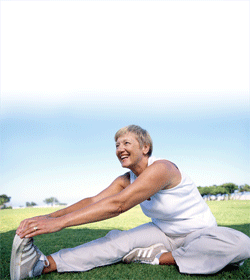According to the Mayo Clinic, osteoarthritis is the most common form of arthritis, one that occurs when the cartilage protecting the ends of your bones wears down. It’s sometimes called degenerative joint disease—or, more informally, wear and tear arthritis. Note that this is different from rheumatoid arthritis, which is an autoimmune disease.
Symptoms of osteoarthritis include joint pain and stiffness, typically in the person’s knees, hips, hands and spine, although you can develop osteoarthritis in any joint in your body.
Millions of people have this condition. Although the damage caused can’t be reversed, there are osteoarthritis treatment plans that can help to reduce the associated joint pain and stiffness and improve your quality of life.
Here’s more information.
Cause and Risk Factors
Cartilage is defined by the Mayo Clinic as a “firm, slippery tissue that enables nearly frictionless joint motion. Eventually, if the cartilage wears down completely, bone will rub on bone ... osteoarthritis affects the entire joint. It causes changes in the bone and deterioration of the connective tissues that hold the joint together and attach muscle to bone. It also causes inflammation of the joint lining.”
Older people are more likely to develop osteoarthritis, and it’s more common in women than in men, although researchers aren’t sure why the gender difference exists. Obesity is another risk factor, with added weight causing more stress on a joint, especially on weight-bearing joints such as your knees and hips. Plus, proteins found in fat can trigger inflammation.
Joint injuries can increase the risk of developing this condition, such as those suffered from car accidents or sports injuries, and so can repetitive joint stress. People can inherit the tendency to develop osteoarthritis, while others can be born with defective cartilage or malformed joints. Having diabetes or too much iron in your body are also risk factors.
Diagnosing Osteoarthritis
If you’re experiencing joint pain and stiffness, talk to your doctor to find out how to reduce pain and stiffness. He or she may recommend a physical exam that includes X-rays of bones and/or soft images by the joints. Tests may be conducted as well, including blood tests or an examination of joint fluid.
Osteoarthritis Treatment Plan
According to the National Institutes of Health, when you talk to your doctor, he or she might recommend medicines as well as other non-drug pain relief techniques to relieve the symptoms of osteoarthritis. The Centers for Disease Control and Prevention (CDC), meanwhile, shares how doctors often recommend an increase in physical activity — and losing weight as needed. Physical therapy can help, and sometimes crutches or canes may be needed. If other osteoarthritis treatment plans have not worked, surgery may be recommended. Here are additional strategies to reduce pain and improve your quality of life if you develop osteoarthritis.
Preventative Strategies
If you haven’t developed osteoarthritis and want to proactively prevent this from happening, Arthritis.org provides recommendations. As an overview, “Ultimately, the best defense against any disease, including OA, is a healthy lifestyle. The way you eat, exercise, sleep, manage stress and interact with others, and whether you smoke or drink can have tremendous influence not just on overall health, but also on the health of your joints.”
Although osteoarthritis is more common in older people than younger ones, it’s not an inevitable part of aging. Your weight is a significant risk factor, with every pound you gain adding nearly four pounds of joint stress to your knees and adding six times the amount of pressure on your hips. Engaging in physical activity and losing weight can help significantly in preventing the development of osteoarthritis, reducing stress on a joint, including your weight-bearing joints. Effectively managing your blood sugar can help to prevent osteoarthritis, and so can lifting and carrying objects using your largest and strongest joints to prevent joint injuries.










